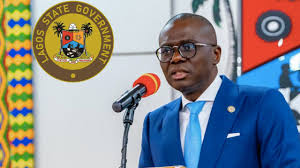Mansa Musa: The African Emperor Richer Than Bezos, Musk, and Gates—Combined

When we talk about the richest people in history, names like Jeff Bezos, Elon Musk, and Bill Gates often come to mind. But even when adjusted for inflation, their fortunes pale in comparison to that of Mansa Musa I, the 14th-century ruler of the Mali Empire.
Historians estimate Musa’s net worth at over $400 billion in today’s dollars. That’s more than the GDPs of Norway and Ireland combined—yet outside of Africa, his name is barely known. His story is rarely taught in Western classrooms, overlooked in favor of European industrialists and American tech moguls.
It’s time to change that.
Who Was Mansa Musa?
Mansa Musa reigned over the Mali Empire from 1312 to 1337, during a period known as Africa’s golden age of trade. His empire stretched across 500,000 square miles, making it one of the largest and most prosperous in the world at the time. It spanned present-day Mali, Senegal, Niger, Nigeria, Chad, Mauritania, and The Gambia.
At its peak, the Mali Empire accounted for nearly 5% of the global population. Its incredible wealth came primarily from gold and salt—two commodities as valuable then as oil and data are today. In fact, half the world’s known gold supply in the 14th century came from just three mines within Musa’s territory.
The Legendary Pilgrimage
In 1324, Mansa Musa made his now-famous pilgrimage to Mecca—a spiritual journey that doubled as an international display of power and generosity. It became one of the most extravagant expeditions in recorded history.
His caravan stretched for miles and included:
- 100 elephants
- 60,000 attendants
- 80 camels loaded with 21,000 kg of gold
- 12,000 slaves, each carrying 2 kg of gold
The journey from Mali to Mecca covered 2,700 miles and lasted two years. Musa reportedly built a mosque every Friday along the route.
But what truly stunned the world wasn’t the size of the caravan—it was his generosity. Musa gave away so much gold in cities like Cairo, Medina, and Mecca that he devalued the metal for over a decade, triggering a regional gold recession.

The Man Who Put Mali on the Map
Musa’s pilgrimage made waves across the Islamic world and Europe. It was during this time that the 1375 Catalan Atlas—a widely used medieval world map—depicted Mansa Musa holding a gold coin, placing Mali and its ruler firmly into global consciousness.
More than just a wealthy king, Musa was a savvy diplomat and cultural patron. His open-handed generosity and diplomatic charm attracted scholars, architects, poets, and merchants from across the Islamic world.

Timbuktu: A Legacy of Knowledge
On his return to Mali, Musa annexed Timbuktu, transforming the city into a global hub for commerce, education, and Islamic scholarship. He commissioned the construction of the Djinguereber Mosque, built by Andalusian architect Abu Ishaq Es Saheli using 200 kg of gold—a structure that still stands today.
He also expanded the Sankore Madrasah, which evolved into one of the world’s first major universities. At its peak, Sankore enrolled over 25,000 students and housed a library with more than 1 million manuscripts—rivaling the fabled Library of Alexandria.
This made Timbuktu a beacon of learning in a time when most of Europe was still deep in the medieval period.

A Visionary Leader Ahead of His Time
Mansa Musa’s impact extended far beyond wealth. He:
- Strengthened the Mali Empire’s cultural identity
- Promoted religious tolerance and Islamic scholarship
- Built infrastructure that connected West Africa to global trade routes
- Used wealth as a tool for empowerment, not exploitation
His reign lasted 25 years, and by the time of his death in 1337 at age 57, Mali had become one of the most influential and wealthy empires in the world.
Why Isn’t Mansa Musa a Household Name?
Despite his staggering influence and unimaginable wealth, Mansa Musa remains a footnote in global history education. This is no accident.
His erasure speaks to a broader issue: the Eurocentric lens through which history is often taught. While Western curricula celebrate industrialists like Rockefeller and Carnegie, or tech tycoons like Musk and Bezos, figures like Mansa Musa—who built wealth not from conquest but from trade, scholarship, and generosity—are frequently ignored.
It’s not just a disservice to Africa. It’s a disservice to world history.
Why Mansa Musa’s Story Matters Today
In a time when wealth inequality dominates headlines and tech billionaires shape global policy, Mansa Musa’s story offers a radically different narrative. He used his resources not only to strengthen his empire but to uplift people, expand access to knowledge, and lay foundations that lasted for centuries.
Imagine if more African youth knew of a historical figure who looked like them, who built libraries and universities, who inspired peace through faith and learning, who was once the richest man on Earth.
His story challenges modern assumptions about Africa’s place in global economic history and forces us to rethink what leadership, wealth, and influence can look like.
Final Thought
Mansa Musa is not just an African story. He’s a human story—of power used wisely, of faith guiding politics, and of prosperity tied to generosity.
As the world reexamines its heroes and the narratives we’ve been taught, one thing is clear: it’s time we remember Mansa Musa—not as a forgotten king, but as the richest person in history, and one of the most visionary leaders the world has ever seen.




